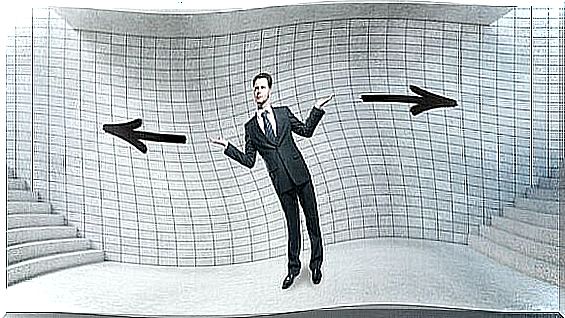Reversible Thinking: Fighting Cognitive Laziness

When you have a firm belief in something and someone gives you some kind of proof that makes you doubt what you believed in, you have two options. One is to realize that you may be wrong, to accept that your opinion is not right, and then change it. This means that you use reversible thinking.
The second option is what most of us usually choose: the opposite of the first. You hold on to your faith, and it becomes irreversible. You close your eyes to any other possibility and hold on to your point of view. And this is part of the amazing complexity and imperfection of the human brain.
Why it’s so important
Reversible thinking is the ability people have to reason things in different directions. That is, the ability to see things from one perspective, but also the opposite perspective. This ability helps you solve complex problems and see all the points on the spectrum between the two opposites.
It is a form of thinking that broadens your perspective and makes it easier to solve problems, whether personal or professional. Thanks to reversibility , you can deal with your problems in a more logical, direct way.
On the other hand, there is also polarized thinking, which is actually very exhausting. In this case, it is either one thing or the other. There are no alternatives in between or anything that can be discussed. Polarity will get you stuck. It paralyzes you.
If you manage to place yourself at one of the centers of the spectrum, you will take full advantage of reversible thinking, the kind that really makes you move again.

Blind to proof
Now imagine that you have been walking through the forest for hours and you are very hungry. High up on a mountain you see an apple tree. You start running towards it. The only thought you are focused on is the precious fruit.
But when you get to the top you see that the apples are rotten. You can not eat them. But along the road you ran on, there were fruit trees of all kinds. If only you had stopped and looked around!
This is how the human brain sometimes works. And that’s why we act so stupid sometimes: We look straight ahead without worrying about turning our heads and seeing what’s going on around us.
We walk around with blinders on. However, it is not just stubbornness, because it has more to do with personality traits. What we are really doing is letting irreversibility take over.
8 ways you can react to evidence that goes against what you believe
There are specifically eight possible reactions to being presented with evidence that goes against what you believe (Chinn and Brewer, 1933). The first three reactions fall under irreversible thinking: ignoring facts, denying them and omitting them.
The other five reactions fall under reversible thinking: put prejudices aside, interpret facts, accept them and make minor changes to your idea, or accept facts and change your idea.

Why do we not use reversible thinking?
Our brains are not as perfect as we think they are. We see the brain as a perfect machine, one that accurately and rationally analyzes things. But when it comes to trying to reverse your thinking, you realize that it is far from perfect.
We place great emphasis on finding facts, evidence and theories that will confirm our beliefs. It is not often that we go in a different direction. If you tried to look for evidence that went against your inclinations, your brain would see it as self-sabotage and try to get that idea out of your head.
All you need to do is find a small sign that you have the right to confirm your thinking and decide for it. For example, someone who is convinced that tobacco is not bad for their health can search thousands of websites until they find the one that says “smoking makes you live longer”.
And even if it is not true, if you do not have reversible thinking, then you will believe it. Out of thousands of sites that said the opposite, and all the studies that show that it is bad for your health, you stick to the one that strengthens your beliefs.

Cognitive laziness
Have you ever heard of heuristics? They are a kind of mental shortcut that your brain uses to save energy. That is, if there are two paths to the same result, the brain will try to take the one that involves the least amount of effort.
And that means you are guided by a mentally energy-saving principle. It is uncontrollable, invisible and unconscious. It is also an explanation of why our brains like to look for facts that validate our theories with full access to ideas that show that they are wrong.
If you want reversible thinking, you must think in a logical, rational way. That means making an effort your brain will not always make. It takes less effort to confirm an opinion and settle down with it. Our brains are cognitive sloths! It is extremely important to get all the other myths out of your head and remember that your brain will do what it can to do less work.
It happens all the time in our daily lives. It may seem strange, but no one can escape it. When presented with facts, you have two choices. Either stick to your opinion and ignore the rest, or broaden your perspective and consider other ideas.









